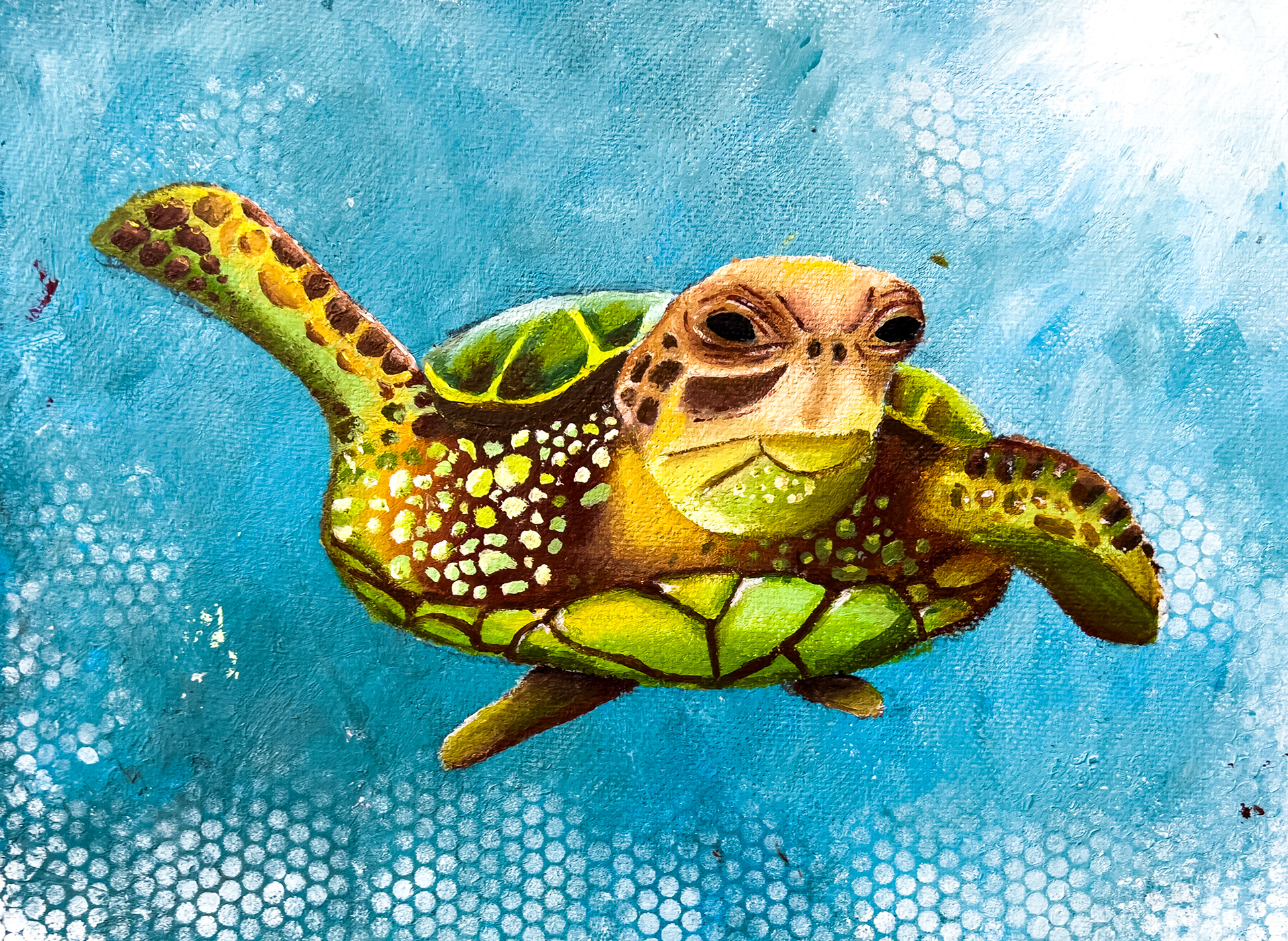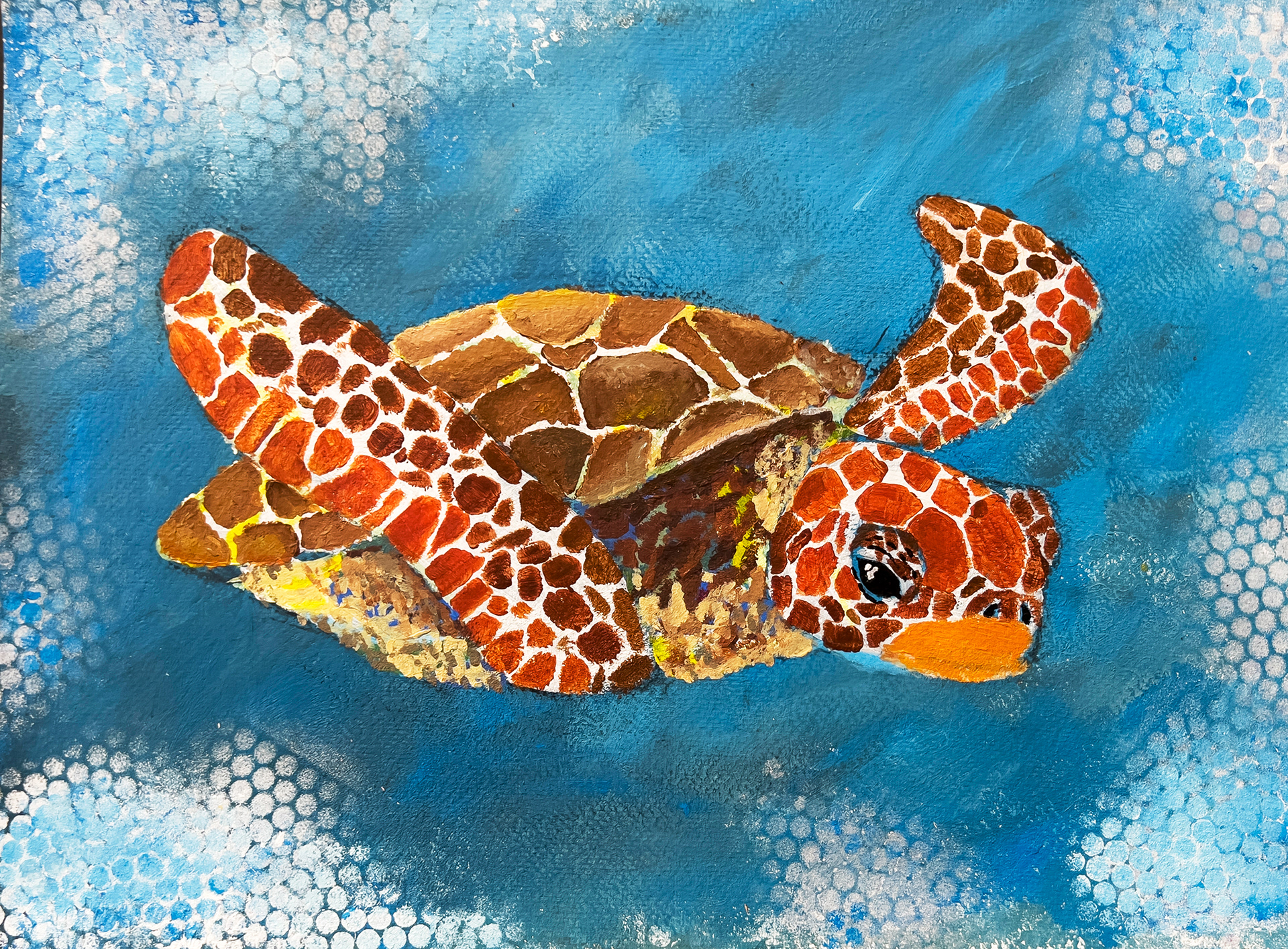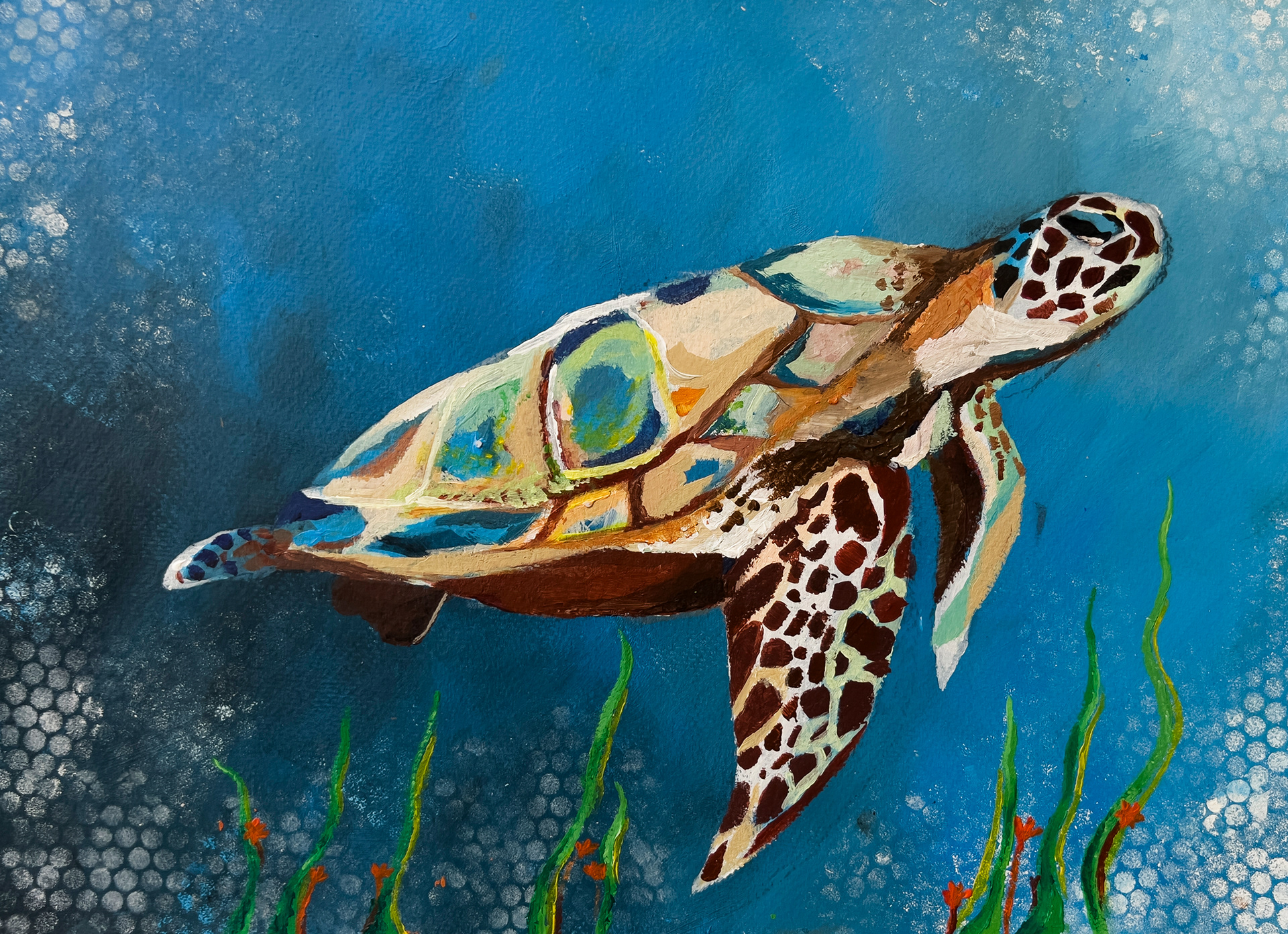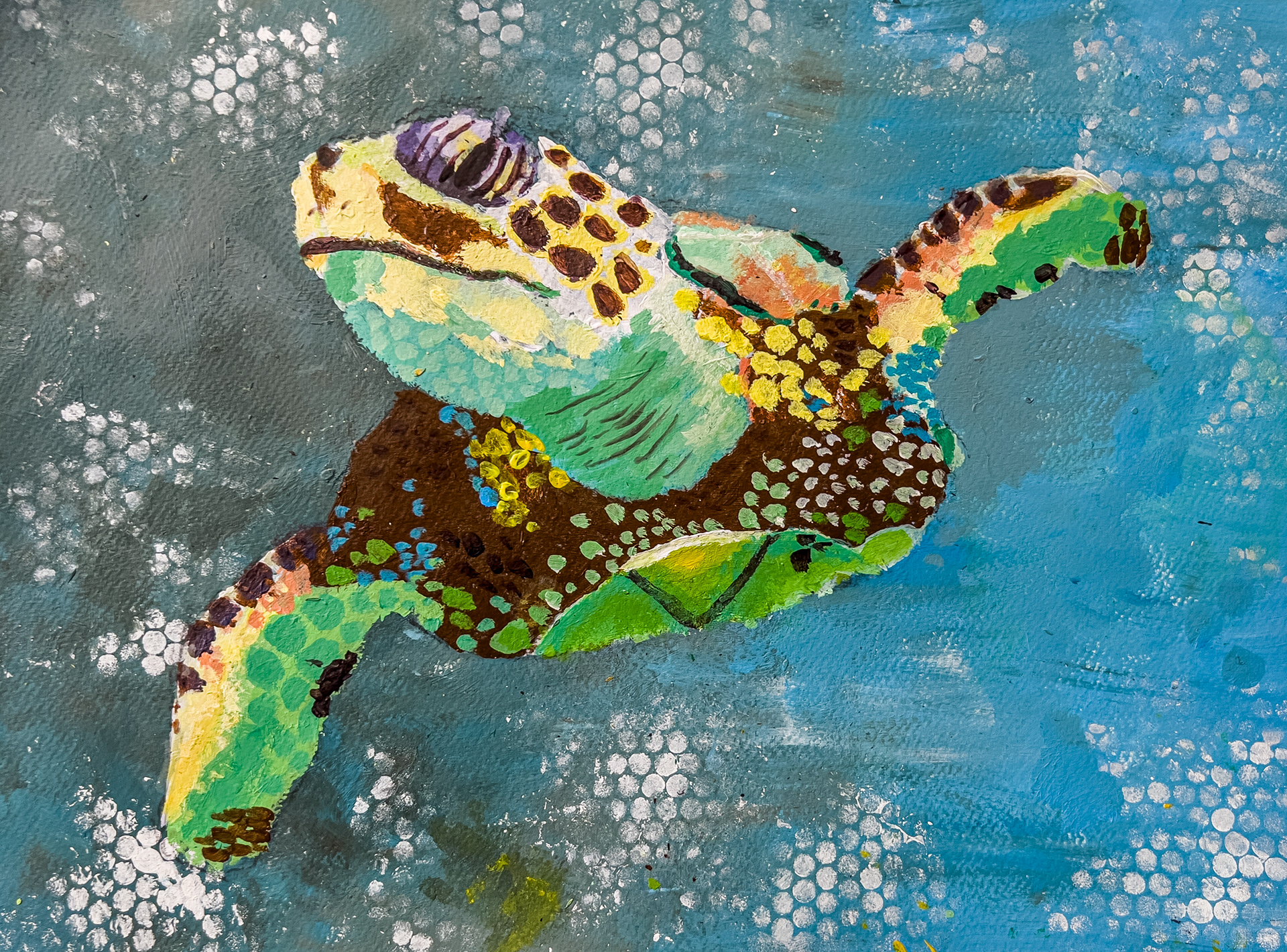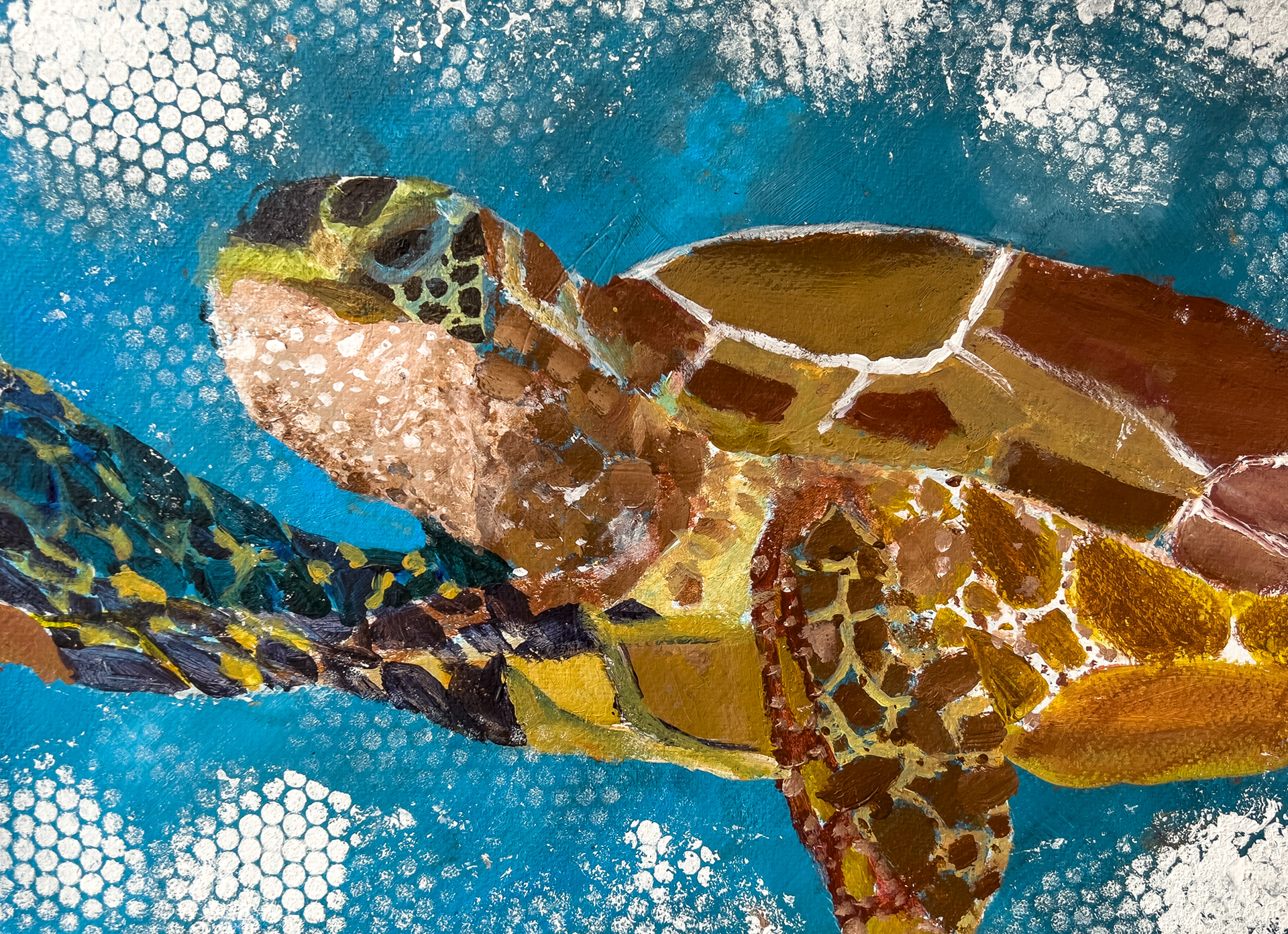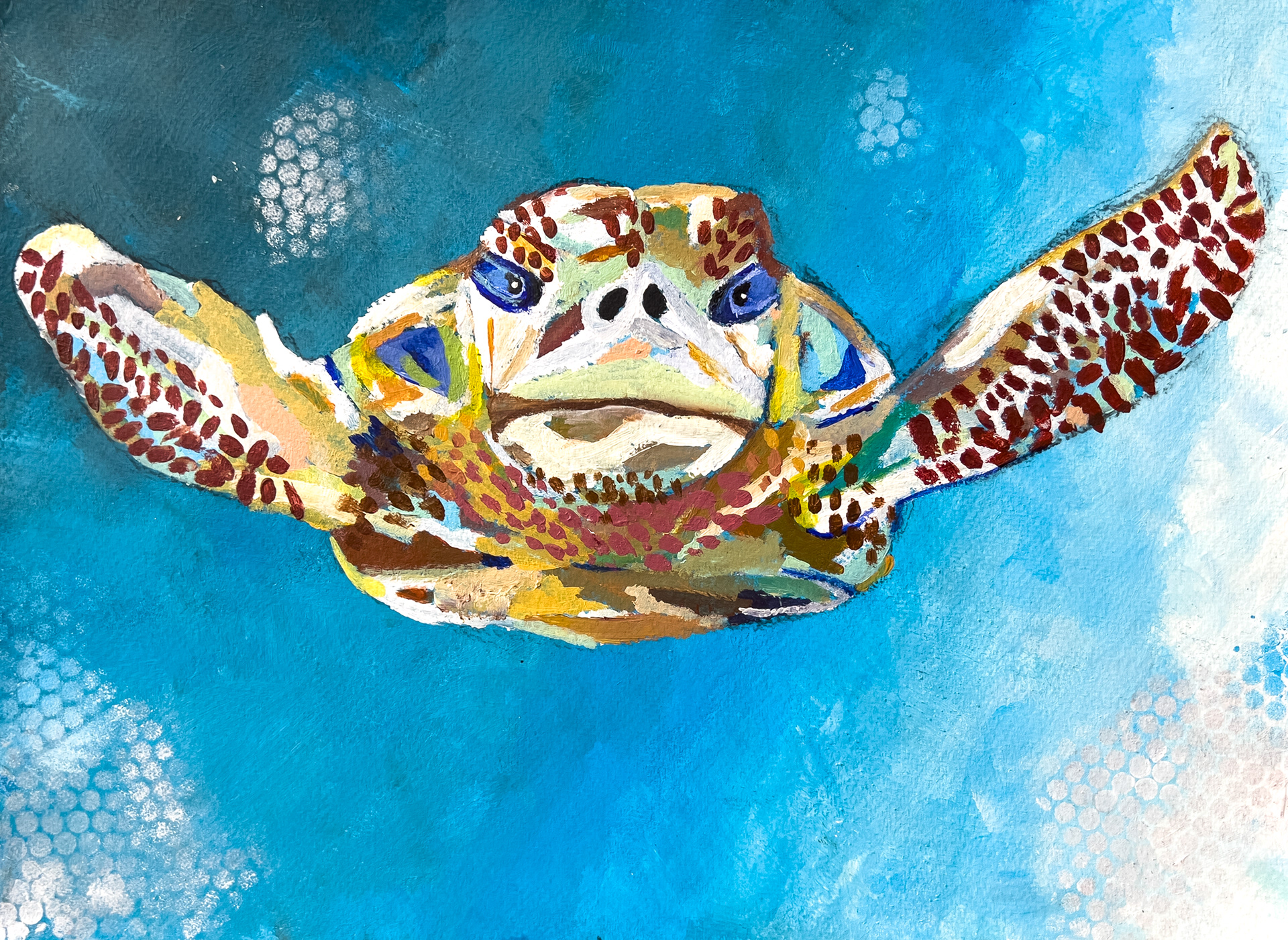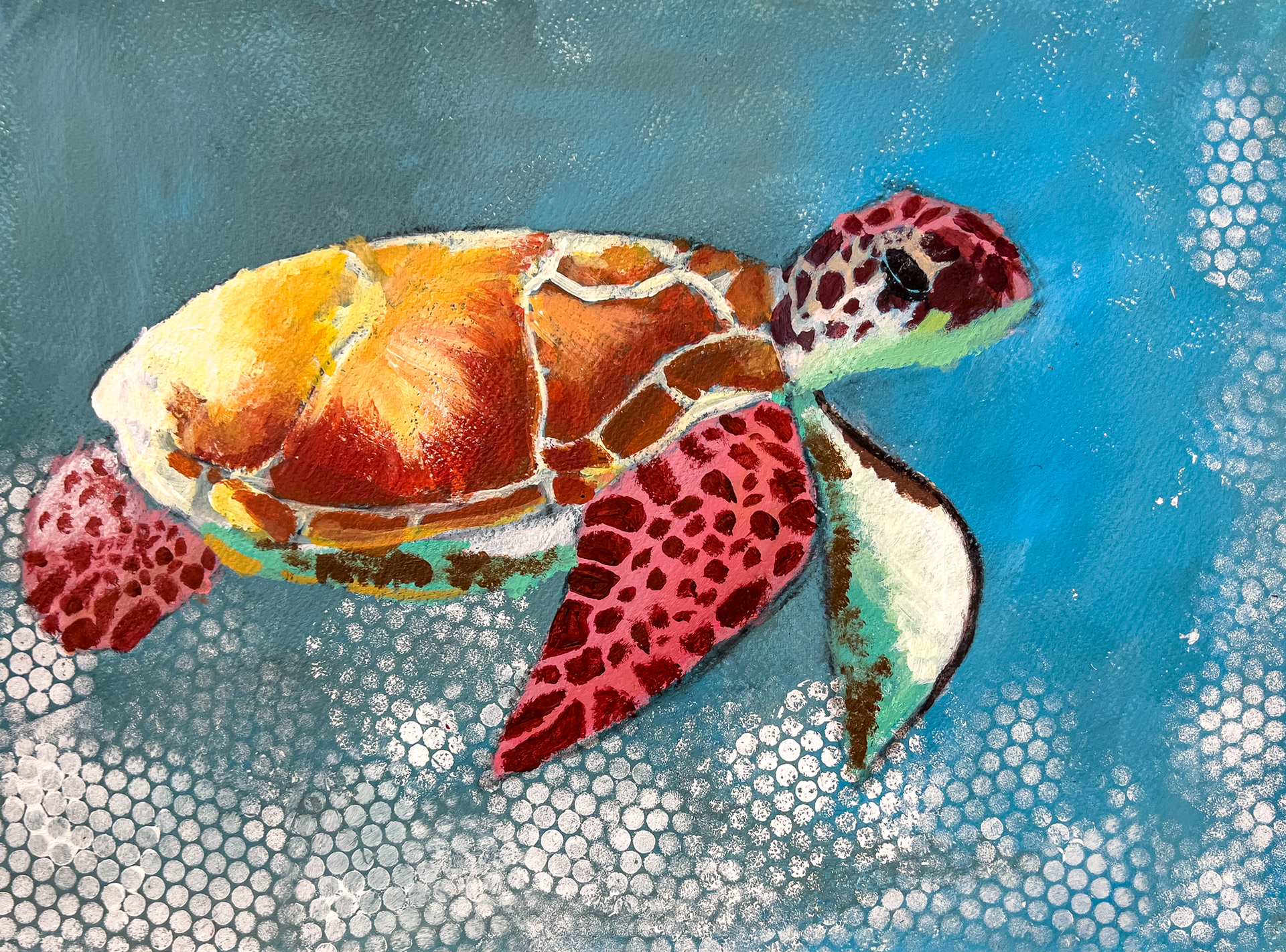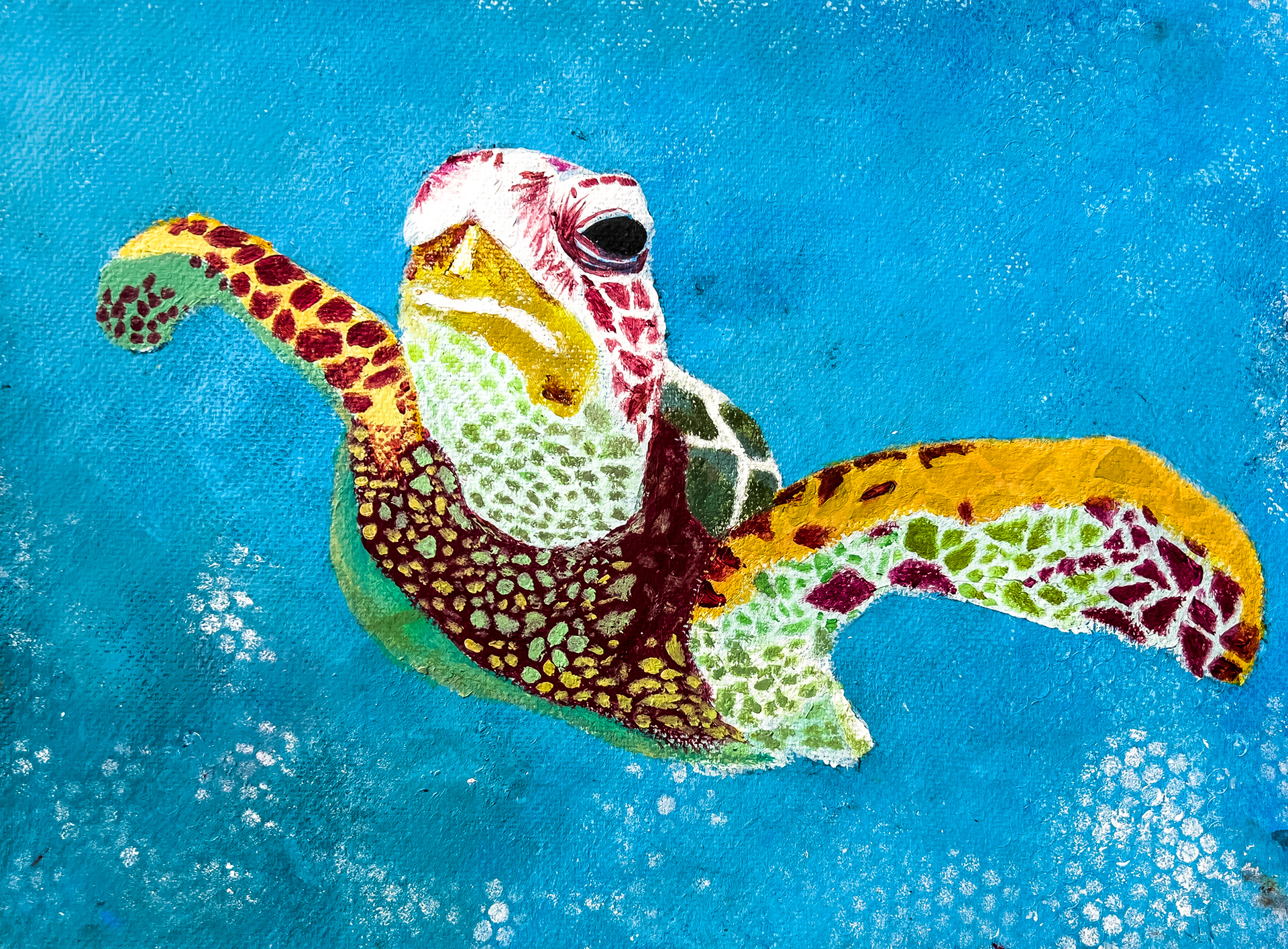Learning Objectives:
• Learn how to apply and manipulate acrylic paints, showing particular control of paint consistency
• Experiment with expressive paint techniques
• Understand the role of colour in painting
• Experiment with expressive paint techniques
• Understand the role of colour in painting
What you will need:
A reference image, watercolour paper (or your sketchbook), a soft pencil (preferably 2B or 4B), ruler, eraser, pencil sharpener, acrylic paints, a small brush, a larger brush, a pot of water, a paper towel, punchanella and a sponge.
Reference Images:
Choose an image to paint from the selection below.



















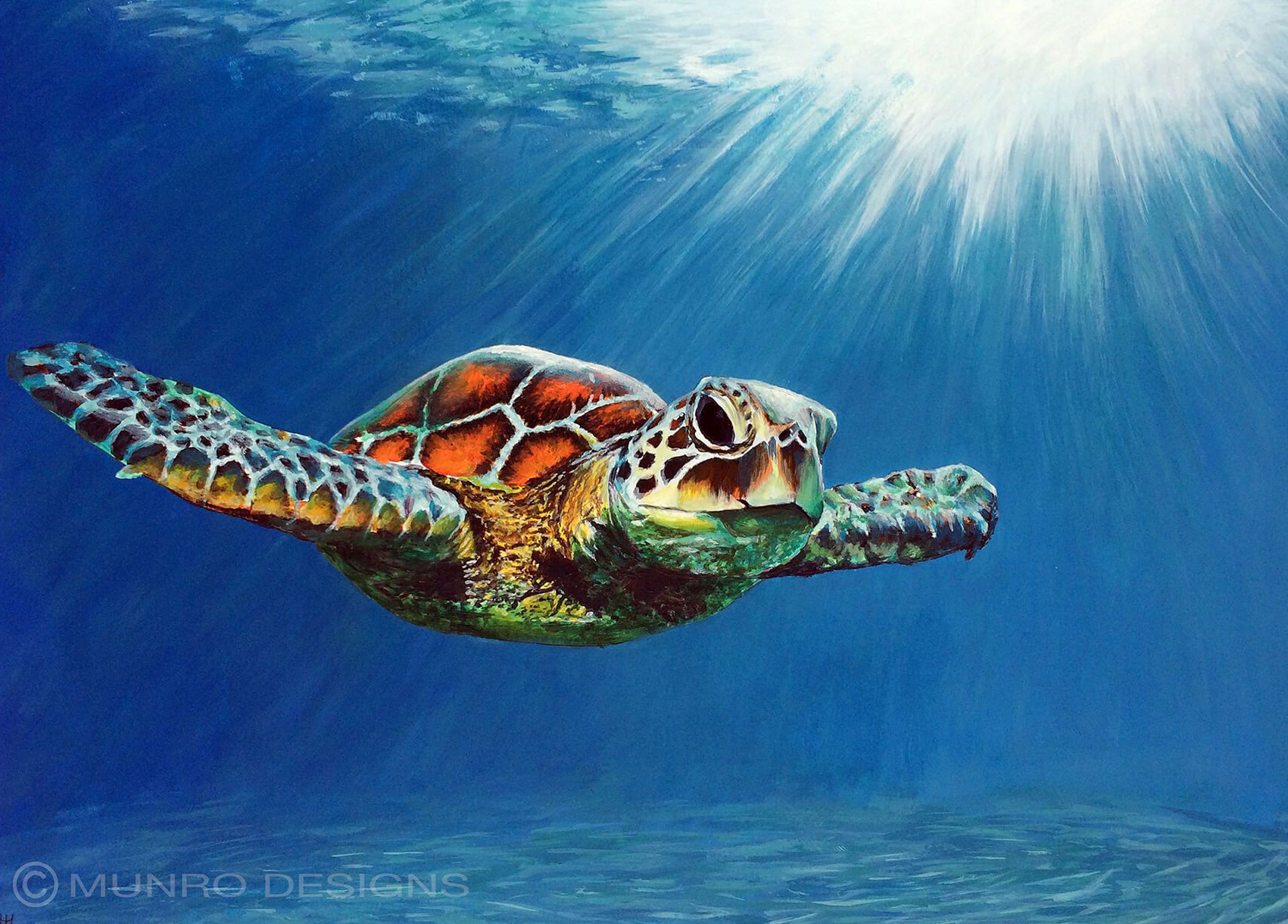
Your Task:
Begin by selecting an image of a turtle (above) and then paint the background, following the video below:
Add some texture to your background using punchanella:
You now need to leave your painting to dry before you can paint the turtle.
Top Tips:
• Paint with diagonal brushstrokes when priming your background.
• You will need quite a lot of paint on the page to cover it and to blend, but be careful not to have too much on your brush. It might help to wipe your brush on a paper towel before blending.
• When using punchanella, be careful not to put too much paint on your sponge. It's better to layer up slowly.
• Hold the punchanella still when dabbing the paint for neater dots, otherwise the paint could smudge.
• You will need quite a lot of paint on the page to cover it and to blend, but be careful not to have too much on your brush. It might help to wipe your brush on a paper towel before blending.
• When using punchanella, be careful not to put too much paint on your sponge. It's better to layer up slowly.
• Hold the punchanella still when dabbing the paint for neater dots, otherwise the paint could smudge.
Examples of previous students' paintings:
What do you think has gone well and what could have been improved?
